What is Waterproof Fabric?
16th December, 2022
If you are reading this, there is a chance that you might be in the market for waterproof fabric, wondering what is waterproof fabric. what does it mean, the difference between waterproof, water-resistant, and water-repellent materials and even what is the best option for your needs.
This article will provide you with a comprehensive guide to these fabrics, their types, uses, care, manufacturing methods, and every other things that makes them different. Let’s get into it!
What is Waterproof Fabric?
Waterproof Fabric
Waterproof fabric does not allow water or any other substance to pass through it. It does not imply that these textiles are entirely impermeable; instead, it provides the best water protection, among other materials. They are composed of various materials, including synthetic fibres like polyester and nylon and natural fibres like cotton and wool.
Water-repellent Fabric
Water-repellent fabrics provide more excellent protection than water-resistant fabrics. The fabrics are treated with a water-repellent coating, which prevents water from penetrating the fabric. Water-repellent materials are commonly used in clothing, such as jackets, pants, and shoes.
Water resistant Fabric
Water-resistant textiles provide the least amount of water protection of the three options. It can prevent water penetration into the cloth to some extent but not completely. They are mainly made of synthetic fibres like polyester or nylon and are used for outdoor clothes like jackets and trousers.
What is the distinction between Waterproof, Water-repellent, and Water-resistant Fabrics?
Waterproof, water-resistant, or water-repellent Fabrics are all designed to keep you dry in wet conditions. But how do they function? And what is the distinction between them?
- Waterproof fabrics are those that do not allow water to penetrate through them. It implies that they will keep you dry even if you are standing in a rainstorm or are soaked in water.
- Water-resistant fabrics are made from materials that repel water but do not prevent it from penetrating the fabric. They will shield you from light rain and splashes but won’t keep you dry in heavy rainstorms or if you are immersed. They cost less and are more breathable than waterproof fabrics.
- Water-repellent fabrics have a coating substance that causes water to bead up and roll off. However, in mild rain, this will assist in keeping you dry, but in heavy rain, it won’t offer much protection. They are also often less expensive and more breathable than waterproof or water-resistant materials.
What Are the Benefits of Each Fabric Type?
Each type of cloth offers a unique set of advantages. Whichever fabric you choose will serve a purpose, and the benefits of utilizing this cloth in your house or company are as follows.
Waterproof Fabrics
- Waterproof textiles are long-lasting and simple to clean.
- They are excellent for keeping you dry, whether it rains or snows.
Water-resistant Fabrics
- They are long-lasting and simple to clean.
- They are breathable, making them more comfortable in hot and humid conditions.
Water-repellent Fabric
- Water-repellent fabric is more breathable.
- It is lightweight and ideal for light rains or when you wish to be protected from the weather without being burdened by its weight.
What Are the Common Uses of These Fabrics?
Waterproof materials are used for outdoor and indoor gear, and clothing, such as raincoats, tents, and camping equipment, are frequently used in outdoor gear and apparel.
Water-resistant textiles are frequently used to create active wear or water-resistant apparel and gear, such as jackets and pants.
Water-repellent fabrics are used in various applications, including upholstery, outerwear, and footwear.
How Are Waterproof, Water Resistant, and Water-Repellent Fabrics Made?
Waterproof textiles are created by laminating a membrane or layering a polymer or membrane layer over a textile foundation. Polyurethane (PU) and polytetrafluoroethylene (PTFE) are two of the materials utilized to create the laminate (PTFE).
Water-resistant fabrics are made of tightly woven fibres that prevent water from penetrating. The most commonly used water-resistant materials include nylon, polyester, and cotton.
Water-repellent fabrics are made by using a coating substance that repels water. Silicon and fluoropolymers are the most prevalent water-repellent coatings.
How Do You Care For Each Type of Fabric?
When washing or cleaning waterproof materials, you must handle them with care. However, if these textiles are not correctly cared for, they will suffer damage and eventually wear out. Some tips for maintaining these materials are shown below.
- Always wash your fabric in cold water with light soap. Avoid using bleach or other strong chemicals that might harm the material.
- Allow the fabric to air dry after properly rinsing it. Avoid placing the cloth in the dryer since the heat might destroy it.
- If you need to iron your fabric, use a low setting and consult the care label for instructions
Most Common Waterproof Fabrics
There are several fabric types available on the market today but these are the most commonly used waterproof textiles, water-resistant fabrics, and water-repellent materials for your next project.
Wool
Wool is a natural fibre, sustainable and biodegradable. It won’t be waterproof but its capacities of preventing water to pass through are improved when a lanolin coating is added.
Polyester and Nylon
Polyester and nylon material has a tight weave making it water-resistant. With treatment, you get durable, waterproof fabric that is widely used in the clothing manufacture, outdoor home projects and many other applications.
Polyurethane Laminate (PUL)
This fabric is made from polyester that is treated with a waterproof coating. It’s lightweight, breathable, durable and washable. PUL is a polyester fabric that has a plastic backing comprising a thin waterproof layer.
Microfiber
Made from polyester, it’s water-resistant before a coating is applied. Microfibre is soft, smooth and comfortable, and when is fully treated, becomes 100% waterproof.
ELS Cotton
The longer cotton fibres allow for a tight, dense weave that prevents moisture from seeping through making it a naturally water-resistant fabric.
Vinyl
Vinyl is made from polyvinyl chloride (PVC). It’s durable, strong, versatile and waterproof. Mainly used in outdoor apparel, fire protective clothing and equipment covers.
Waxed cotton
Waxed cotton is cotton impregnated with a paraffin or natural beeswax based wax, woven into or applied to the cloth.
Oilcloth
Oilcloth is a linen cloth with a coating of boiled linseed oil to make it completely waterproof. It is durable and cleans easily. It’s also a heavy fabric that’s commonly used for tote bags and luggage.
Conclusion
To wrap it up, you now have all the information you require regarding waterproof fabric and everything else in between. Whether you need fabric to cover your kayak, sew a waterproof jacket for your hiking adventure or simply need outdoor cushions, you now understand what fabric is needed for your specific project. You can make more informed decisions when purchasing different types of fabric for different types of makes. If you still have any questions, we are always one email away to answer any questions you might have!
Visit us today at UK Fabrics Online to browse our wide range of options available!
All photos by UK Fabrics Online.
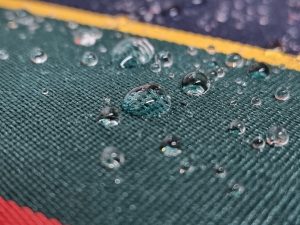
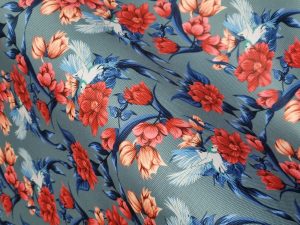
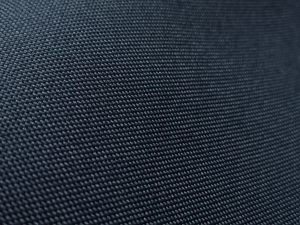
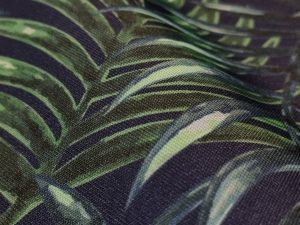
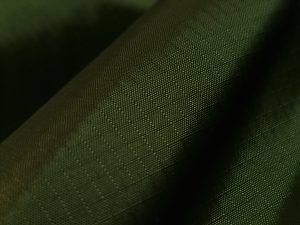
Leave a Reply